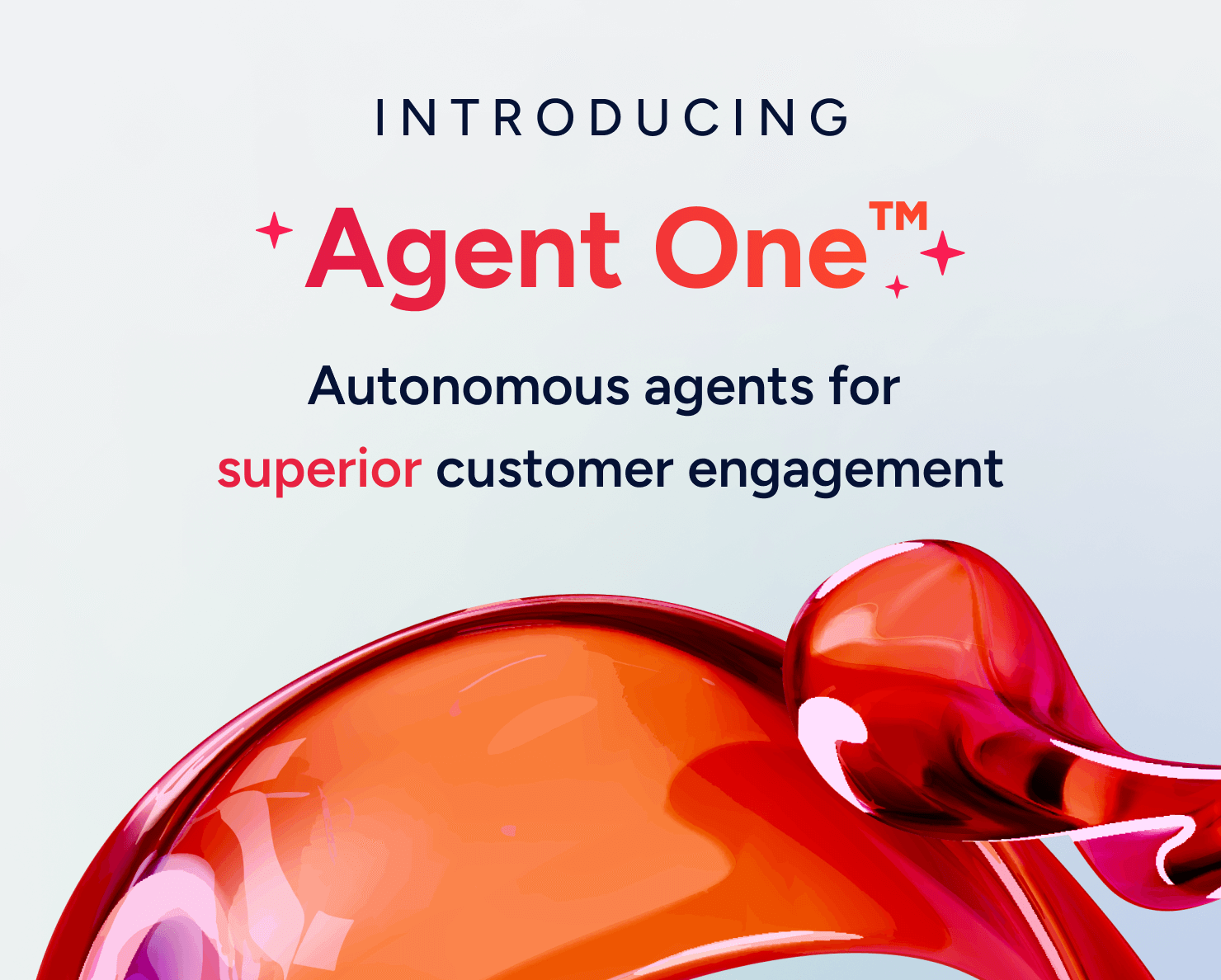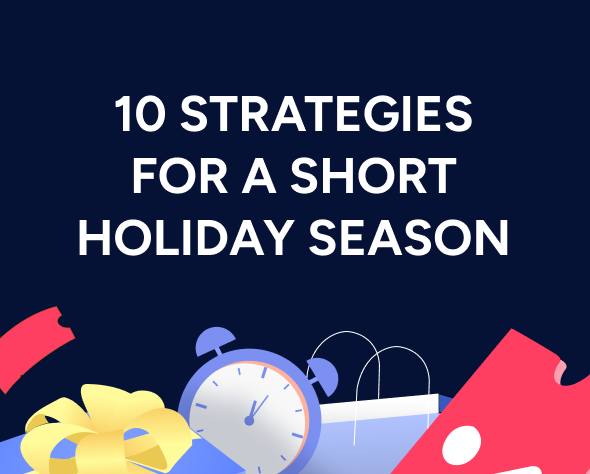Behavioral segmentation: How it works, types, and examples
Behavioral market segmentation is a collection of techniques that brands use to organize their target audiences into groups based on key behaviors.
Updated on 16 Aug 2024
Many of these behavioral segmentation techniques have been used for decades because they enable marketers to:
- Uncover how different customers interact with the brand.
- Perform behavioral analytics to uncover valuable insights into customers’ purchasing decisions.
- Target the right groups of customers with personalized content, messaging, and product recommendations across all channels.
In this guide, you’ll learn how this process works by exploring eight different types of behavioral segmentation with real-life examples. First, we’ll start with the basics of what behavioral segmentation is and why it’s an essential part of a marketer’s toolkit.
What is behavioral segmentation?
Behavioral segmentation (sometimes called behavioral targeting) is the process of dividing leads and customers into segments based on their behavioral characteristics. This can include past purchases, website visits, interactions with campaigns across different marketing channels, and so on.
Behavioral segmentation is usually combined with other market segmentation techniques like demographic segmentation and geographic segmentation. This enables brands to find valuable segments, analyze their behaviors, and uncover insights that can help them drive engagement, revenue, and customer loyalty.
The importance and benefits of behavioral segmentation
Organizing groups of customers based on shared behaviors offers five important benefits:
- More targeted campaigns: Behavioral segmentation lets you target different customers based on what they’ve bought, browsed, added to their carts, or shown interest in. This level of personalization can make marketing campaigns much more effective.
- Higher conversion rates: This is a direct consequence of the first benefit. The more targeted your efforts, the more customers will convert, resulting in a better utilization of your marketing spend.
- Better retention and customer lifetime value (CLTV): Behavioral segmentation lets you analyze users’ behaviors and helps you understand how to keep turning them into loyal customers. Over time, it also helps you uncover what drives brand loyalty and how to maximize the CLTV of different segments.
- Behavior predictions: Modern marketing platforms can use past behavioral patterns to predict what customers might do in the future. This process — called predictive marketing or predictive segmentation — opens the door to various new ways to target customers effectively, based on their likelihood to purchase, potential spending, and much more.
- Cost-effectiveness: Understanding your target audiences and segmenting them properly enables you to make the most out of your marketing budget. You can serve relevant content, messaging, and product recommendations at each stage of the customer lifecycle, without wasting resources on channels and efforts that don’t align with customers’ previous behaviors.
8 different types of behavioral segmentation (with examples)
You can find countless ways to segment audiences based on behaviors. Any interaction customers have with your brand — whether on your site, in your store, or via email, social media, SMS, WhatsApp, and other channels — can be used to organize them into segments.
However, the trick is to do that in a way that:
- Makes sense for your business goals and your customers’ journeys.
- Enables you to analyze each customer segment and extract valuable insights.
- Lays the foundation for driving conversions, revenue, and customer retention via personalized marketing efforts.
Below, we’ll show you eight proven ways to do that with Insider — our AI-native platform for individualized, cross-channel customer experiences. We’ll also include real-life examples of behavioral segmentation from our clients who used Insider to find and target the right people with their campaigns.
#1 Customer journey stage
One of the classic ways to segment your customer base is to group people by their lifecycle stage. You can define these stages based on your company’s individual goals and buyer journeys.
However, that’s often easier said than done as users across different stages still perform a lot of the same activities. For example, loyal customers might interact with your online ads and read your newsletter, just like new leads and potential customers.
That’s why it’s essential to leverage behavioral data from the entire customer lifecycle. This is where a customer data platform (CDP) can be of huge help.
CDPs can unify customer data from various sources and touchpoints — including CRMs, CMSs, analytics tools, and so on — into a single convenient database. They also give you detailed, 360-degree profiles of your customers, like the one shown below.
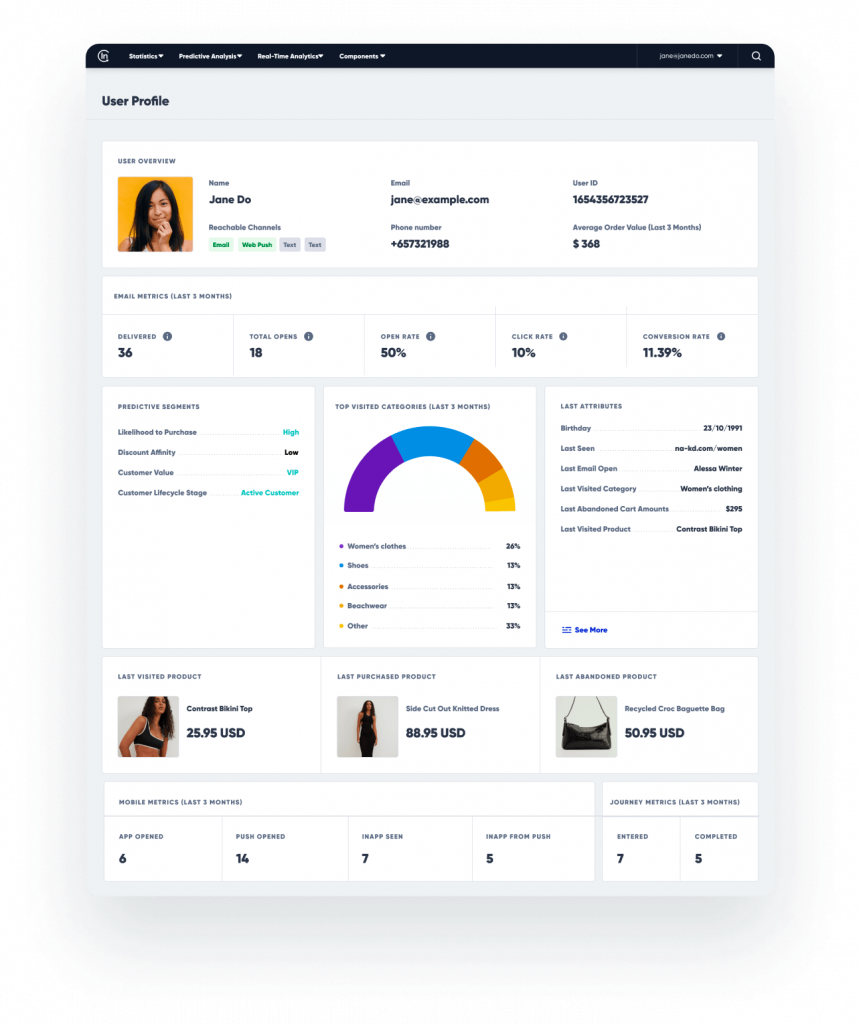
With this foundation in place, you can be sure that you’re basing your segmentation strategy on all relevant data about your customers. Additionally, a good CDP (like Insider) will give you plenty of segmentation options, so you can home in on the right audiences for your campaigns.
For example, Remix used Insider to target new users (i.e., leads) after their registration. Their goal was to turn these leads into paying customers, so they built an automated email marketing plan that:
- Sent an email prompting the user to save their preferred search filters if they didn’t purchase anything within a week.
- Triggered a second email after a few days, showing users how to mark a brand as a favorite, with a list of brands available on the website.
- Triggered a final email with ways to combine orders and save money on shipping.

The result of these guided journeys was a 104% increase in first purchases compared to the previous quarter.
#2 Channel engagement
Another powerful way to segment your audiences is to look at which channels they use to interact with your brand. This can help you focus your marketing budget and efforts on the touchpoints that have the highest chance of engaging your audiences and leading to sales.
Insider makes this process easy by automatically creating segments of users who have interacted with your brand on channels like email, push notifications, SMS, or WhatsApp.

You can combine these with other behaviors and characteristics to gain valuable insights into your customers’ behaviors. For example, you can find out which channels loyal customers prefer or which touchpoints new customers use right before making their first purchase.

#3 Purchase behaviors and browsing history
Segmenting customers based on the products they’ve bought or shown interest in is perhaps the best-known behavioral segmentation tactic. It’s also extremely effective when combined with more granular segmentation based on attributes like price, size, color, scent, features, and so on.
This is another area where an eCommerce CDP is beneficial, as it can enable you to unify and store all relevant information, including:
- What products each customer bought across your online and offline (i.e., brick-and-mortar store) properties.
- Which attributes they’ve shown interest in.
- Which categories they’ve browsed.

You can also use behavioral analytics to understand the purchase process of important customer segments. For example, you can see if customers take a lot of time before making their purchase decision, whether they jump between different options before buying, which pages they visit beforehand, and so on.
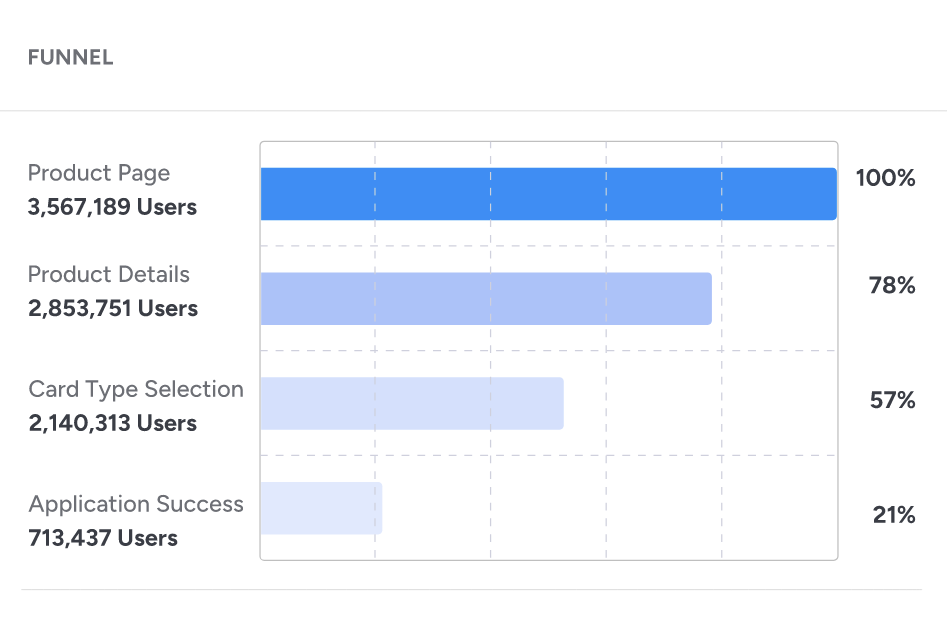
When combined with a good product recommendation engine, you can use these behavioral insights to boost customer satisfaction and revenue by ensuring each customer sees highly relevant items across all touchpoints.
For example, Sapphire used Insider’s personalized product suggestions to streamline the product discovery process on their site. Instead of navigating through thousands of results in a manual search, their customers can now easily explore related products via a personalized recommendation widget, which helped the brand generate a 12X ROI.
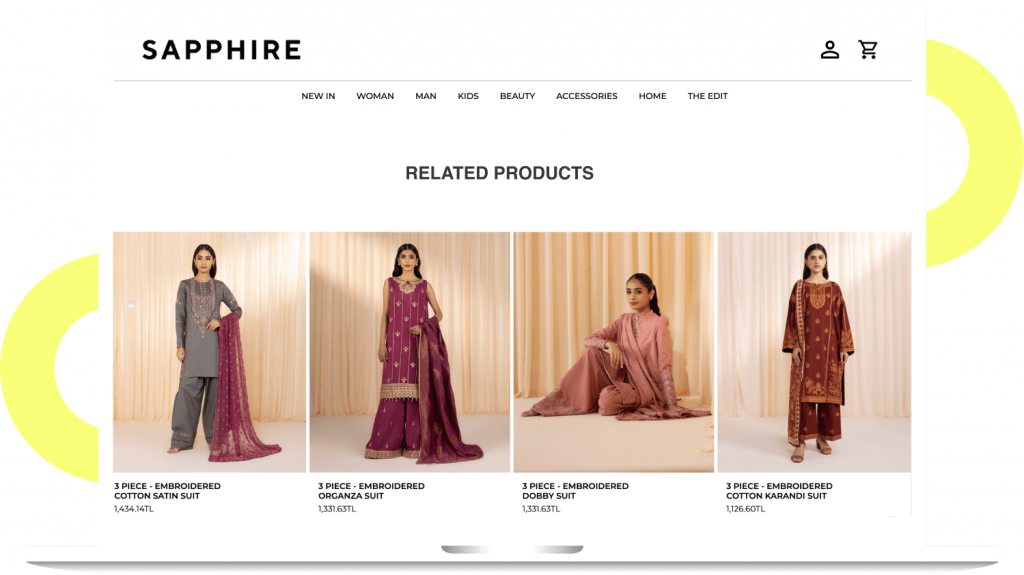
#4 Cart and browser abandonment
Cart abandonment has always been a thorn in the side of digital marketers. That’s why essential to have a way of identifying which customers abandon their carts (or a product page), analyzing their behavior, and finding a way to get them back.
Similar to the channel interaction segments, Insider automatically creates audiences of users who abandoned their carts or visited a product page without adding anything to their carts. Again, you can enrich those with other characteristics and behaviors (e.g. devices, locations, previous purchases, and so on) to get more granular insights.

From here, you can use various channels (e.g., email, SMS, or online ads) and techniques to bring back cart abandoners and get them to complete their purchases.
One of our clients’ favorites is to use personalized web push notifications, as there’s no extra cost involved with sending each notification, making them an extremely cost-effective way to recover lost carts.
For example, Carrefour used Insider’s web push notifications as a new way to engage users who had abandoned their carts. This allowed them to brick back those potentially lost customers by highlighting unique product benefits, leading to an additional $11,000 in the first month and a conversion rate uplift of 350%.
#5 Timing-based
This type of segmentation is used by brands whose products and services are purchased for a personal (e.g., birthdays and anniversaries) or a universal (e.g., Christmas and Valentine’s Day) occasion.
You can approach occasion-based segmentation in different ways. For example, if you’re collecting data like birthdays and anniversary dates, it should be fairly straightforward to analyze each customer’s behavior and show them relevant offers for their special day.
You can easily do this with Insider’s Architect — an AI-powered customer journey builder and marketing automation tool.

The same goes for replenishment campaigns, where customers buy products — like groceries, cosmetics, diapers, and so on — on a recurring schedule. Again, plenty of our clients run timing-based replenishment campaigns to increase revenue and sales by targeting the right customer segments with relevant offers at the right time.
#6 Customer loyalty and user status
With customer acquisition costs rising constantly, driving customer loyalty and retention has become the number one priority for many brands. That’s why it’s crucial to segment and analyze the behavior of your best customers in order to:
- Understand what products, services, and communication channels they like.
- Why they prefer your brand, e.g., because of specific products, customer service, a great loyalty program, and so on.
- Uncover how you can maximize their CLTV and potentially turn others into loyal customers as well.
For example, with Insider, you can create segments of VIP customers who’ve made the most purchases from your brand. Then, you can target them in a variety of ways, like showing them your most valuable products across your website, mobile app, or email marketing campaigns.
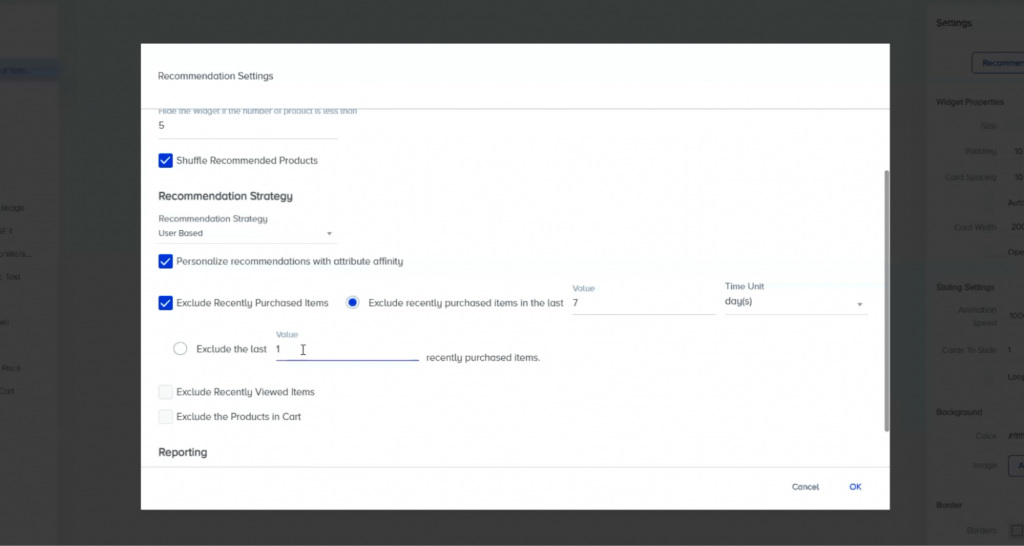
This loyalty-based segmentation should go hand in hand with other forms of segmentation based on user status.
For example, you can also take a look at new users, returning ones, and first-time buyers, so you can understand their behaviors compared to loyal customers. If you have a mobile app, you can also organize people into groups based on their usage behavior (e.g., light users, heavy users, and so on).
For example, Adidas used Insider to segment new and returning website visitors. Their goal was to boost online sales for these segments by offering different coupon codes.

They A/B tested different coupon versions to find the ones that had the highest impact on conversion rates and revenue. The result was a 259% increase in average order value (AOV) from new users in one month and a 35.5% conversion rate boost from returning users.
#7 Predicted behaviors
As you can see, traditional behavioral segmentation relies on actions that have already occurred, like users browsing a certain category or interacting with a specific email. However, AI solutions now enable marketers to target customers based on what they’re likely to do in the future.
For example, if you’re using Insider, you can segment customers based on predictive behaviors, such as:
- Discount affinity.
- Potential spending.
- Likelihood to purchase.
- Likelihood to engage on a specific channel.

You can combine these predictive characteristics with standard segmentation options to create highly targeted segments for your campaigns.
For example, Allianz used Insider’s AI-powered segmentation to keep customers updated on the latest products and offers. Working closely with our growth experts, Allianz built an app push notification strategy that encouraged users to opt-in to future communications. This marketing strategy also allowed Allianz to re-engage customers just in time for renewal.
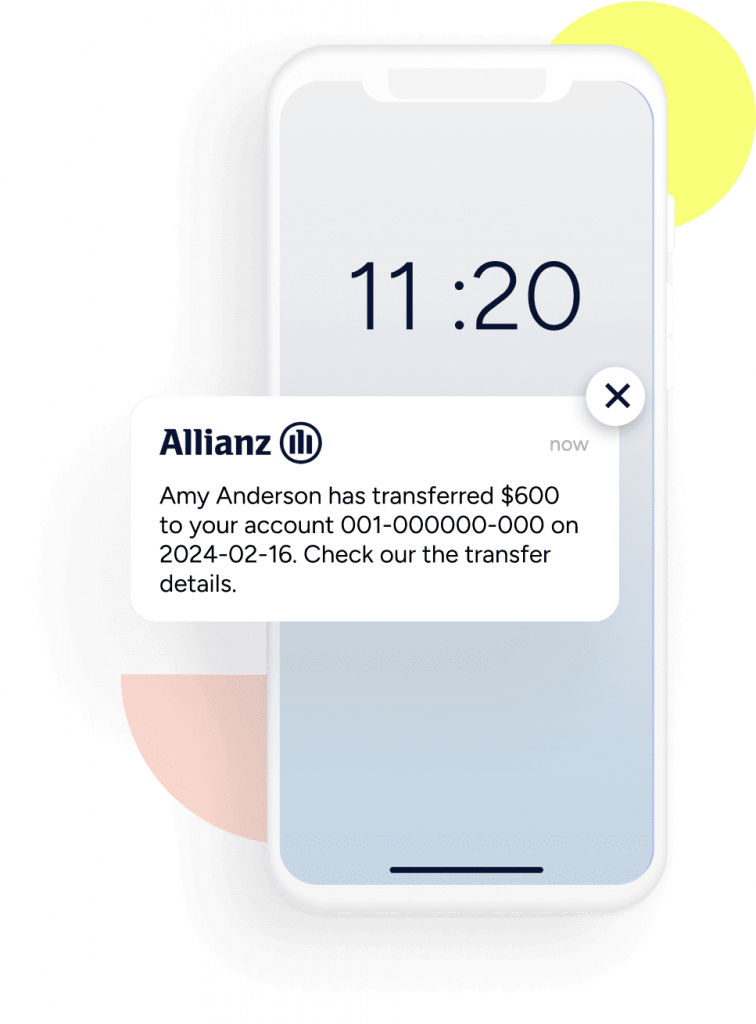
This helped Allianz achieve an 80% opt-in rate (which is 20% higher than the industry average) and increase their CLTV.
#8 Exit intent
This isn’t a behavioral segmentation technique per se but it’s a very useful tactic that can help you reduce bounce rates, generate more leads, and drive extra revenue based on what your website visitors are likely to do.
The idea is to detect users who are about to leave your site, based on their recent activity or lack thereof. You can then target them with a relevant offer or an engaging pop-up to try and get them to stay with an incentive to provide their email address or make a purchase.
For example, Insider offers an exit intent trigger that detects when customers are about to bounce and gives you a chance to keep them on your site with personalized offers.

Peugeot used Insider’s exit intent technology to improve their lead generation efforts. Their marketing team believed that segmenting customers more granularly and offering them personalized signup forms would increase the number of quality leads.
Thanks to Insider, they were able to implement this strategy by notifying customers on each car’s product page with a personalized marketing message when they showed exit intent. This helped Peugeot increase the number of test drive form fills by 120% in just 20 days.
Find the right segments for your marketing efforts with Insider
Insider’s AI-powered segmentation capabilities will help you target customers using 120+ attributes, including behaviors, traits, characteristics, preferences, and more. You can choose from a broad range of standard, automatically created, and predictive audiences to build highly targeted segments for your campaigns.
Additionally, our CDP gives you granular 360-degree customer views by unifying all your customer data. From there, you can deliver personalized messaging, content, and product recommendations based on your customers’ needs, their buying behavior, and all other relevant data points using:
- AI-powered Smart Recommendations to show relevant products across all channels.
- 100+ pre-built templates for all channels and use cases to create campaigns quickly.
- An AI-powered customer journey builder and automation platform to create personalized experiences across 12+ channels, including SMS, email, WhatsApp, TikTok, and more.
- Personalized search results to drive higher conversions and AOV.
- Personalized mobile stories to enable visual product discovery.
- And much more.
Put simply, Insider makes it easier than ever to find the right segments for your campaigns and target them effectively with personalized cross-channel experiences to improve key metrics like customer engagement, revenue, churn, and acquisition costs.
To learn more about how Insider can benefit your business, click here to book a demo with our team.

